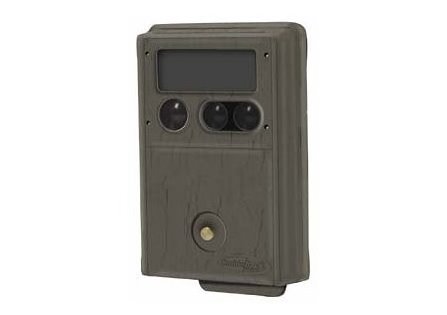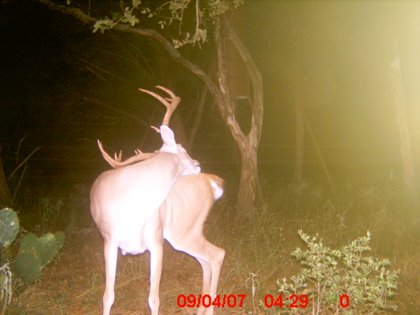
You know the big boy is out there. You have seen the signs that a mature white-tailed buck leaves behind: large tracks, rubs on trees the size of your leg, scrapes the size of a bath tub. Yet the buck has repeatedly managed to give you the slip despite hours on stand. Frustration and doubt are creeping in and you need an advantage.
In the past, you might have resorted to placing string across a trail as a way of monitoring that area. Or maybe you raked the dirt in an attempt to monitor animals walking through the area. But we’ve come a long way and improved, affordable technology is at your disposal. The tools of deer scouting have changed the game.
Enter the trail camera, game camera, or whatever you want to call them. I call them very helpful. Trail cameras are equipped with infrared motion sensors that trigger the camera to take pictures any time an animal crosses the sensor’s beam.
The use of trail cams by deer hunters has grown exponentially during the last few years. Game cameras are no longer reserved for very wealthy or whitetail addicts. Today, the use of game cameras has become almost the norm rather than the exception. I visit a lot of hunting forums and hunters share trail camera photos as easy as they trade opinions. As technology becomes more user-friendly and even less expensive, expect trail camera usage and sales to increase. That’s good news for the manufacturers. Deer hunters love them, too, so it works out.
Through the use of trail cameras, hunters often received a boost in confidence and a surge of determination after discovering that there are more bucks roaming the woods than they had even realized.
Any one that has used a game camera will tell you that they invariably see more bucks in their area thanks to the camera. They will also tell you that bucks, especially big mature bucks, do most of their feeding and moving around at night. Despite the nocturnal nature of whitetail deer, hunters know those deer are out go into hyperdrive in an attempt to lure those bucks out.
Now, if you are considering taking the plunge and purchasing a trail camera, I will let you know that the choices available are numerous so you need to narrow down your options. Your first decision is to choose between film and digital cameras. However, I will save you the choice. Go digital. You will save money on film processing and get your images much faster. If you have a laptop computer, you can download the images instantly in the field and place the blank data storage card right back in the camera. Also, for those pictures that need “tweaking” to see deer in the background, digital images and computers allow you to enhance photos easily.
Hunters will be lured into buying traditional film cameras because the cost of such cameras is less expensive than the digital equivalents, but don’t do it! The short-term gain will soon be lost through the cost of processing film (time+gas+film developing). If you know a game camera is what you need to take your deer hunting to the next level, get all the options concerning digital game cameras before you buy.

